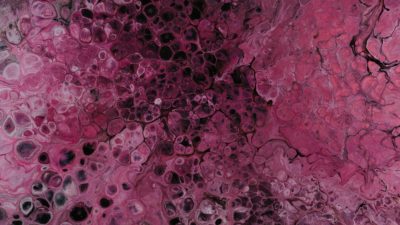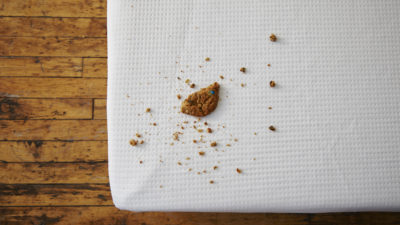Natural latex creates a better mattress than synthetic latex. The natural version of the material comes from the rubber tree. It doesn’t contain petroleum-based chemicals and won’t off-gas. Moreover, it has anti-microbial properties and lasts longer than synthetics. In this article, you’ll learn more about natural and synthetic latex, their features, and their benefits.
What Is Natural Latex?
Natural latex is made from natural rubber tree sap. After the sap is tapped from the tree, it is whipped, poured into molds and baked into layers to create the soft foam that manufacturers use in mattresses.
But making the finished product is not that simple. Different manufacturers use various methods to create the finished product. Certain compounds, such as fatty acid soap, gelling agents, or carbon dioxide gas, are passed through the foam to help it set. Then, the latex undergoes a vulcanization process, which strengthens the material and prevents it from experiencing early oxidation.
The result is a foam that contains mostly natural latex rubber and some zinc oxide, fatty acid soap, sulfur, and sodium.
Types of Natural Latex
There are two types of latex, which get their names from the manufacturing process that is used to make each one.
Talalay Latex
Natural Talalay latex requires more steps in its production than Dunlop latex, the other type of natural latex. Latex is poured into a mold. Then, the mold is sealed, put in a vacuum chamber, flash-frozen, and baked. This process creates a foam with a consistent structure throughout.
Dunlop Latex
The Dunlop process uses fewer steps than the Talalay process, making this type of latex a bit less expensive. The rubber is whipped in a centrifuge, which aerates it. Then, it is poured into a covered mold and baked with steam. Because it’s not molded and set in a vacuum chamber, sediment can fall to the bottom, creating a foam that’s denser at the bottom than the top.
Benefits of Natural Latex
There are many benefits to a natural latex mattress, including:
- Sustainably sourced latex is environmentally friendly
- It provides superior support, cradling and performance than other materials
- Conforms to the body, aligning the spine and providing pressure relief
- Has a strong recovery, which means it bounces back to its original shape easily
- Non-toxic and recyclable
- Naturally resistant to mold, dust mites and mildew
- No off-gassing
- Hypoallergenic
- Isolates motion, making you less likely to feel it if your partner moves
- Lasts longer than many other types of mattresses
Does Natural Latex Mean Organic Latex?
Just because a manufacturer uses natural latex, it doesn’t mean that the mattress is organic. Natural latex means that it’s sourced from the rubber tree and contains other natural ingredients; it isn’t blended with synthetic fibers.
An organic latex mattress uses raw materials that are grown sustainably without the use of pesticides, fertilizers, or other synthetic chemicals. Organic latex should be certified under GOLS, or the Global Organic Latex Standard. The certification indicates that 95 percent of its total weight should be made of certified organic raw material. If you’re looking for a completely organic mattress, make sure that the other materials in the mattress, such as organic wool and cotton, are also grown without harmful chemicals.
What Is Synthetic Latex?
Instead of using sap from a rubber tree, synthetic latex is typically made from styrene-butadiene rubber, a man-made material that’s derived from petrochemicals. It often contains cheap fillers, which make it more durable but detract from its comfort.
Synthetic Latex Benefits
- May be somewhat anti-microbial or anti-mildew, depending on the type
- Contains fewer aesthetic irregularities than natural latex
- Breathable and keeps you cool at night
- May cost less than natural latex
Synthetic Latex Drawbacks
- Not as durable as natural latex
- Doesn’t have the longest lifespan
- Not especially elastic or springy
- Not eco-friendly
- May contain harmful chemicals, which off-gas
- Doesn’t resist mildew, mold and dust mites as well as natural latex
Latex Mattresses vs. Memory Foam Mattresses
Latex is not the same as memory foam. Latex is more eco-friendly. Organic latex creates a sustainable mattress. Memory foam is made from polyurethane and other chemicals, which can off-gas and create harmful vapors in your home.
Latex mattresses tend to be firmer and more springy than memory foam, which compresses with pressure and slowly returns to its original shape when you remove that pressure. Because you sink into a memory foam mattress, it retains more heat than latex. Many people find that both memory foam and latex mattresses cradle your body better than innerspring mattresses.
Why You Should Go With An Organic Latex Mattress
The best mattress that you can get in the United States if you want something comfortable, long-lasting and non-toxic is an organic latex mattress, such as the Birch mattress.
The Greenguard Gold Certified Mattress contains layers of other organic materials that optimize your comfort while you sleep. Birch also sells a plush organic mattress topper that contains natural latex, organic cotton, and organic wool for a dreamy night of sleep.














